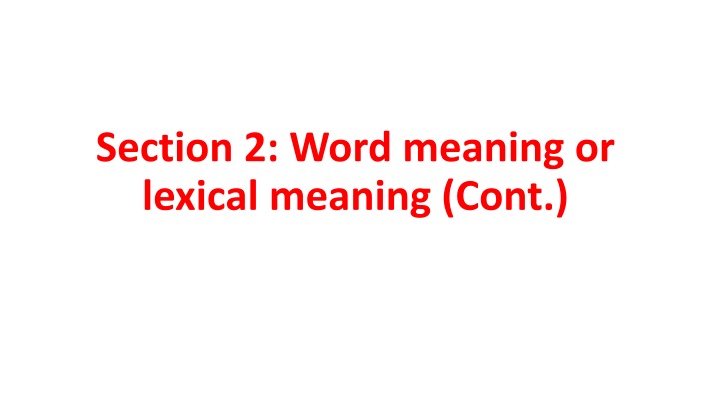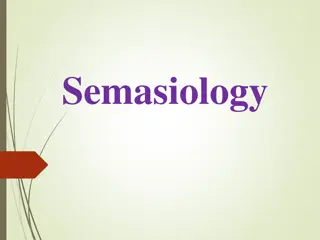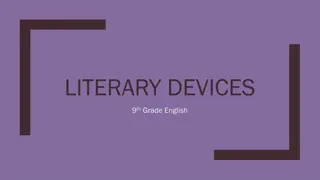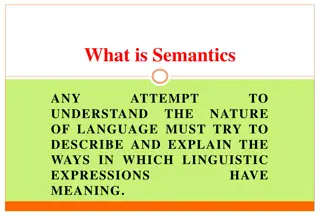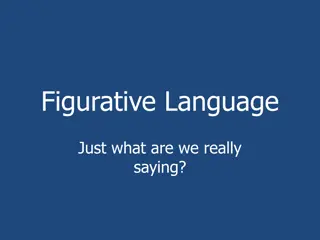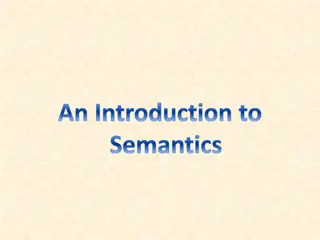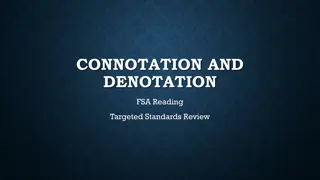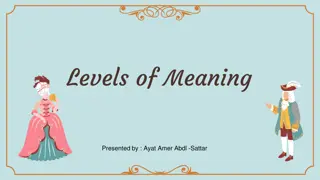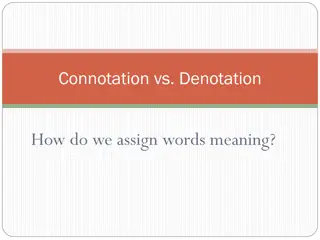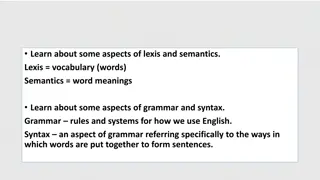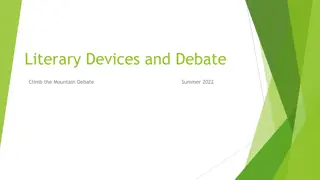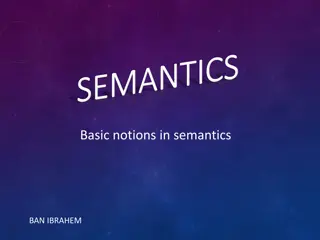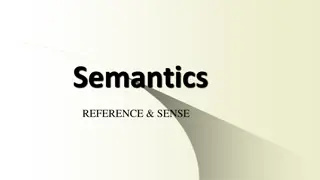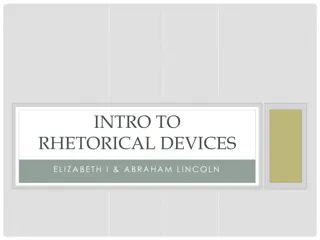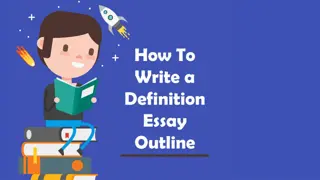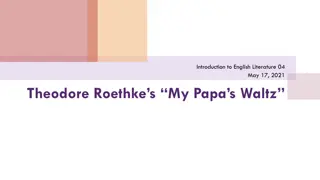Word Meaning: Denotation and Connotation Explained
Denotation as the central meaning of a word vs. connotation, which reflects emotions and attitudes. Explore hyponymy and semantic relationships like synonymy and antonymy.
Download Presentation

Please find below an Image/Link to download the presentation.
The content on the website is provided AS IS for your information and personal use only. It may not be sold, licensed, or shared on other websites without obtaining consent from the author.If you encounter any issues during the download, it is possible that the publisher has removed the file from their server.
You are allowed to download the files provided on this website for personal or commercial use, subject to the condition that they are used lawfully. All files are the property of their respective owners.
The content on the website is provided AS IS for your information and personal use only. It may not be sold, licensed, or shared on other websites without obtaining consent from the author.
E N D
Presentation Transcript
Section 2: Word meaning or lexical meaning (Cont.)
2.4. Denotation and connotation The denotation (denotative meaning) of a word is the core, central or referential meaning of the word found in a dictionary. The connotation (connotative meaning) of a word is the additional meaning that the word has beyond its denotative meaning. It shows people s emotions and/or attitudes towards what the word refers to. Ex1. Child is denotatively described as [+human], [ mature] and [ male]. - Positive connotation: [+affectionate] or [+innocent]. - Negative connotation: [+noisy] or [+irritating]. Ex2. Woman is denotatively described as [+human], [+mature]&[+female]. - Positive connotation: [+devoted] or [+patient]. - Negative connotation: [+wicked] or [+talkative].
Sense relations/Semantic relationships 1. Hyponymy 2. Synonymy 3. Antonymy 4. Homonymy 5. Polysemy 6. Lexical ambiguity
Hyponymy Definition: Hyponymy is a relation in which the referent of a word is totally included in the referent of another word. In other words, hyponymy is the relationship between each of the hyponyms (the lower words) and its superordinate (the higher word):
Distinction between a hyponym and a superordinate A hyponym is a word whose referent is totally included in the referent of another word (the prefix hypo- in hyponym means below ). Accordingly, a superordinate is a word whose referent covers all the referents of its hyponyms. (The prefix hyper- in hyper(o)nym means over. ) Hyponyms often exist at more than one level, resulting in multiple layers of hyponymic relationships:
Hyponymy and inclusion HYPONYMY involves us in the notion INCLUSION in the sense that: - tulip and rose are included in flower - lion and elephant in mammal (or perhaps animal). - scarlet is included in red. Inclusion is thus a matter of class membership: the super term is the SUPERORDINATE and the lower term is the HYPONYM.
Synonymy Synonymy is a relation in which various words have different (written and sound) forms but have the same or nearly the same meaning. Ex1: The two English verbs hide and conceal are synonyms; they both mean keep somebody/something from being seen or known about. Ex2: The four English nouns kind, type, sort and variety are synonyms; they all refer to a group having similar characteristics.
True synonymy There are few true synonyms in the lexicon of a language. Example 1: movie, film, flick and motion picture may be considered as synonyms because they have the same denotative meaning. However, these lexical items differ in their connotative meanings: - movie may strike you as American - film may strike you as British or as appropriate for movie classics or art movies; - flick is used chiefly in very informal contexts - motion picture is quaintly outdated flick n [C] (dated, informal) cinema film and has connotations as a term from the thirties or forties of the 20th century. In brief, movie, film, flick and motion picture are not true synonyms.
True synonymy Example 2: fast, quick and rapid may be considered as synonyms because they may be used interchangeably in: He s a fast/quick/rapid runner. However; - a fast talker: one who is able to get out of trouble by talking cleverly, - a quick talker: one who usually talks in a rapid manner; - OR He has a quick mind, not a rapid mind or a fast mind; - OR He gave her a quick glance, not a rapid glance or a fast glance. In brief, fast, quick and rapid are not true synonyms. Although true synonymy is rare, the notion is useful because it helps describe similarities between the meanings of different terms in the lexicon.
Partial synonymy Partial synonymy is a relation in which a polysemous word shares one of its meanings with another word. Example: (1a). You have my deep sympathy. (1b). You have my profound sympathy. (2a). The river is very deep at this point. (2)b. *The river is very profound at this point. Partial synonymy leads to collocations: a bunch of keys, a herd of sheep, a school of ants, a flock of birds, a group of teachers, a gang of thieves, etc.
